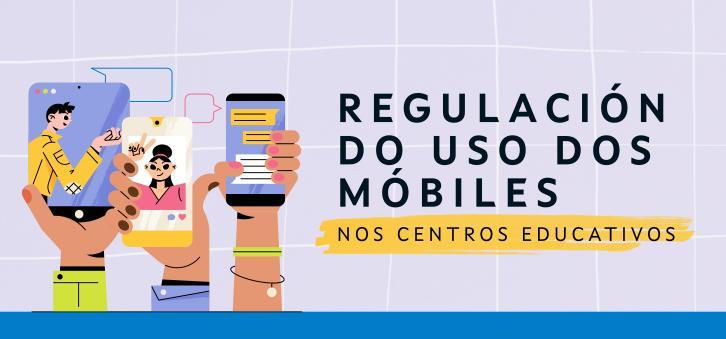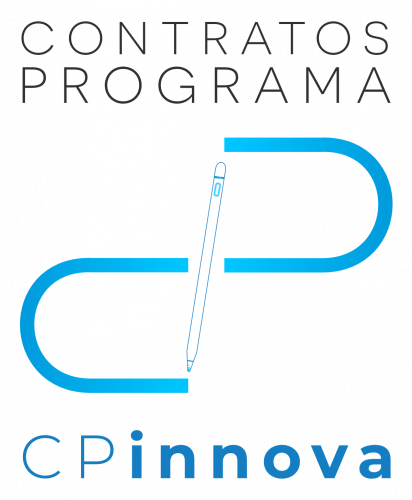Idioma Estranxeiro
A very special visit in Quintáns
Today was a normal day in Quintáns, well we were going to celebrate Xiana's birthday since she was the last one to recover from chickenpox and we hadn't had the ocassion yet.
Hoxe foi un día normal en Quintáns, ben iamos celebrar o aniversario de Xiana xa que ela foi a última en recuperarse da varicela e aínda non tiveramos a ocasión.
Suddenly, Ainoa walked in with a big box. We'd seen that box before and we knew there were three caterpillars inside. However, this time something was different. When we opened the box, none of the caterpillars were there. Instead, there were three cocoons and one of them had a hole. We looked for the butterfly and there it was, a beautiful white butterfly. One of the caterpillars had become that butterfly. Unbelievable!
De súpeto, Ainoa entrou cunha caixa grande. Nós xa viramos aquela caixa antes e sabiamos que dentro había tres eirugas. Con todo, esta vez, algo era diferente. Cando abrimos a caixa, ningunha das eirugas estaba alí. Pola contra, había tres casulos e un deles tiña un burato. Buscamos a bolboreta e alí estaba, unha linda bolboreta branca. Unha das eirugas tornárase bolboreta. Incrible!

But that wasn't all. When we were about to start the lesson, Gabriel walked in with a huge cage. "Do you wanna see my pet?" - he said. "Yes"- we shouted. We hurried towards him and saw a strange animal. "It looks like a mouse"- Miguel said. "No, it isn't a mouse. It's a guinea pig."- replied Gabriel. We wanted to touch its fur. It was white and brown and very soft. "What's its name?"- asked Celia. "Chloe"-answered Gabriel.
Pero iso non era todo. Cando estabamos a piques de iniciar a clase, Gabriel entrou cunha gaiola enorme. "Queredes ver a miña mascota?" - dixo. "Si" - berramos. Corremos cara el e vimos un estraño animal. "Parece un rato" - dixo Miguel. "Non, non é un rato. É unha cobaia." - respondeu Gabriel. Nós queríamos tocarlle a pel. Era branca e marrón e moi suave. "Como se chama?" - preguntou Celia. "Cloe" -contestou Gabriel.
Eventually, we took photos with the animals to remember this special day.
Finalmente, sacamos fotos cos animais para recordar este día especial.
- APIs de Blogue
We love our puppets
The school year is about to finish. We've worked and learnt a lot since September: numbers, colours, animals, food, clothes... But if there is something we love the most, these are the puppets, specially Cheeky Monkey and Tiger.
This is why we are spending our last days at school with them, playing with them, singing with them, hugging them and rocking them when the class is over and they have to go back to the teacher's bag to sleep.
These are some of the moments we spent with them.
O curso escolar está a piques de rematar. Traballamos e aprendemos moito desde setembro: números, cores, animais, alimentos, roupa ... Pero se hai algo que nos encantou moito, foron as marionetas, especialmente Cheeky Monkey e Tiger.
É por iso que estamos a pasar os nosos últimos días na escola con elas, xogando con elas, cantando con elas, abrazándoas e acunándoas cando remata a clase e teñen que volver ao bolso da profe para durmir.
Estes son algúns dos momentos que pasamos con elas.
- APIs de Blogue
Goldilocks and The Three Bears
Before ending the school year, here we have another story told in class: Goldilocks and the Three Bears.
- APIs de Blogue
The Very Hungry Caterpillar
Spring has arrived and we celebrated it with a story we love: The Very Hungry Caterpillar.
Here you can listen to the story again read by its author Eric Carle.
Chegou a primavera e nós celebrámolo cun conto que nos encanta: The Very Hungry Caterpillar (Unha eiruga moi larpeira).
Aquí podes volver a escoitar o conto lido polo seu autor Eric Carle.
- APIs de Blogue
Happy birthday Cheeky!
It is Cheeky's birthday. We have prepared a surprise party at a restaurant with lots of delicious food: sandwiches, biscuits, ice-cream and a big banana cake. We have invited his friends Rory, Tom and Ellie.
É o aniversario de Cheeky. Preparamos unha festa sorpresa nun restaurante comida riquísima: bocatas, galletas, xeado e unha enorme tarta de plátano. Convidamos aos seus amigps Rory, Tom e Ellie.


Let's sing "Happy Birthday".
And now, to continue practising food vocabulary and talk about what we like and what we don't, listen to this song.
- APIs de Blogue
Ireland and Saint Patrick's Day
17th March was Saint Patrick's Day, a national holiday in Ireland. This day people often wear shamrocks and green clothes. There are parades in the whole country but also in other parts of the world such as New York, London, Sydney, Quebec, Chicago... In addition, many of these cities turn their buildings green for one day. Take a look.

According to the legend, leprechauns are said to be very small beings living in the woods and carrying pots of gold. And now a curiosity, did you know that there are not snakes in Ireland?
O 17 de marzo foi o Día de San Patricio, unha festa nacional en Irlanda. Neste día a xente leva trevos e roupa verde. Hai desfiles en todo o país, pero tamén noutras partes do mundo, como Nova York, Londres, Sydney, Quebec, Chicago... Ademais, moitas desas cidades transforman os seus edificios en verde por un día. Bótalle un ollo.
Segundo a lenda, os leprechauns son uns seres moi pequenos que viven no bosque e transportan potes de ouro. E agora unha curiosidade, sabias que non existen cobras en Irlanda?
- APIs de Blogue
Happy Easter!!!
Easter is here with its chocolate eggs, its Spring flowers, its little chicks, the Easter rabbit... Have fun these holidays and don't eat too much chocolate!
- APIs de Blogue
Farm animals!
In infant education we met two special farmers: farmer Brown and Old McDonald. They both have many animals living on their farms and they also have a nice tractor.
- APIs de Blogue
Chinese New Year
February 19th is the the first day of the Chinese New Year, which is celebrated for two weeks and starts on a different day every year depending on the lunar calendar. This year (2015) is the year of the sheep. Each year is a different animal: rat, ox, tiger, rabbit, dragon, snake, horse, sheep, monkey, rooster, dog and pig. The legend says that 12 animals were arguing because they wanted the year to be named after themselves. The emperor decided to make a race across a big river so the new year would be named after the winner of the race. The rat, that wasn't the best swimmer but the cleverest animal, climbed up the ox's back and won the race. Since then, each year is named after the twelve animals in the order they arrived.

O 19 de febreiro é o primeiro día do Ano Novo Chinés, que se celebra durante dúas semanas e comeza un día diferente cada ano, dependendo do calendario luar. Este ano ( 2015 ) é o ano da ovella. Cada ano é un animal diferente: ovella, mono, galo, can, porco, rato, boi, tigre, coello, dragón, serpe e cabalo. A lenda di que 12 animais estaban discutindo porque querían que o ano levase o seu nome. O emperador decidiu facer unha carreira a través dun gran río, así o ano novo levaría o nome do gañador da carreira. O rato, que non era o mellor nadador, pero o animal máis intelixente, subiu no lombo do boi e gañou a carreira. Desde entón, cada anoleva o nome dos doce animais na orde en que chegaron.
- APIs de Blogue
Australia
January 26th was Australia Day. We already knew some things about this far away country, but we took advantage to learn some more.
O 26 de xaneiro foi o Día de Australia. Nós xa sabiamos algunhas cousas sobre este país tan afastado, pero aproveitamos para aprender un pouco máis.
First, we brainstormed some ideas about it:
island kangaroo koala eucalyptus English rugby surf
En primeiro lugar, expuxemos algunhas ideas que tiñamos sobre el:
illa canguro koala eucalipto inglés rugby surf
Then, we located it on the map and looked at some pictures.
Despois localizámolo no mapa e miramos unhas fotos.

This way, we learned that Australia is a big island in the Indian Ocean. Its capital city is Canberra although Sidney is the largest city in the country, where the Opera House is located. Every year, on 26th January they celebrate the arrival of the British to the island. That's why they speak English and its flag, red, blue and white, is very similar to the UK flag. The kangaroo, the koala and also the cockatoo are typical animals there. Koalas eat eucalyptus leaves. However, although they do play rugby, cricket (similar to baseball) is its most characteristic sport.
Desta forma, aprendemos que Australia é unha gran illa no Océano Índico. A súa capital é Canberra, aínda que Sydney é a maior cidade do país, onde se atopa a Opera House. Todos os anos, o 26 de xaneiro conmemoran a chegada dos británicos á illa. É por iso que falan inglés e a súa bandeira, vermella, azul e branca, é moi similar á bandeira do Reino Unido. O canguro, o koala e tamén a cacatúa son os animais típicos de alí. Os koalas comen follas de eucalipto. Sen embargo, aínda que practican rugby, o cricket (similar ao béisbol) é o seu deporte máis característico.
- APIs de Blogue
- « primeira
- ‹ anterior
- 1
- 2
- 3
- 4
- 5
- 6
- 7
- 8
- 9
- …
- seguinte ›
- última »









